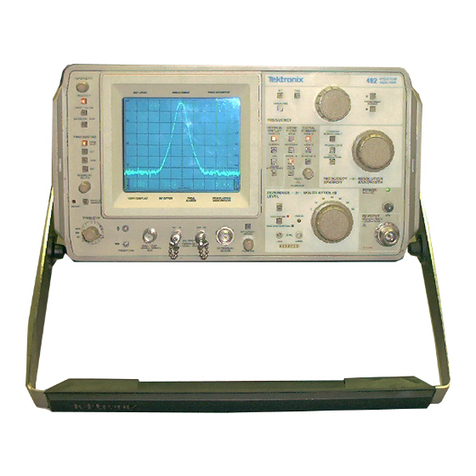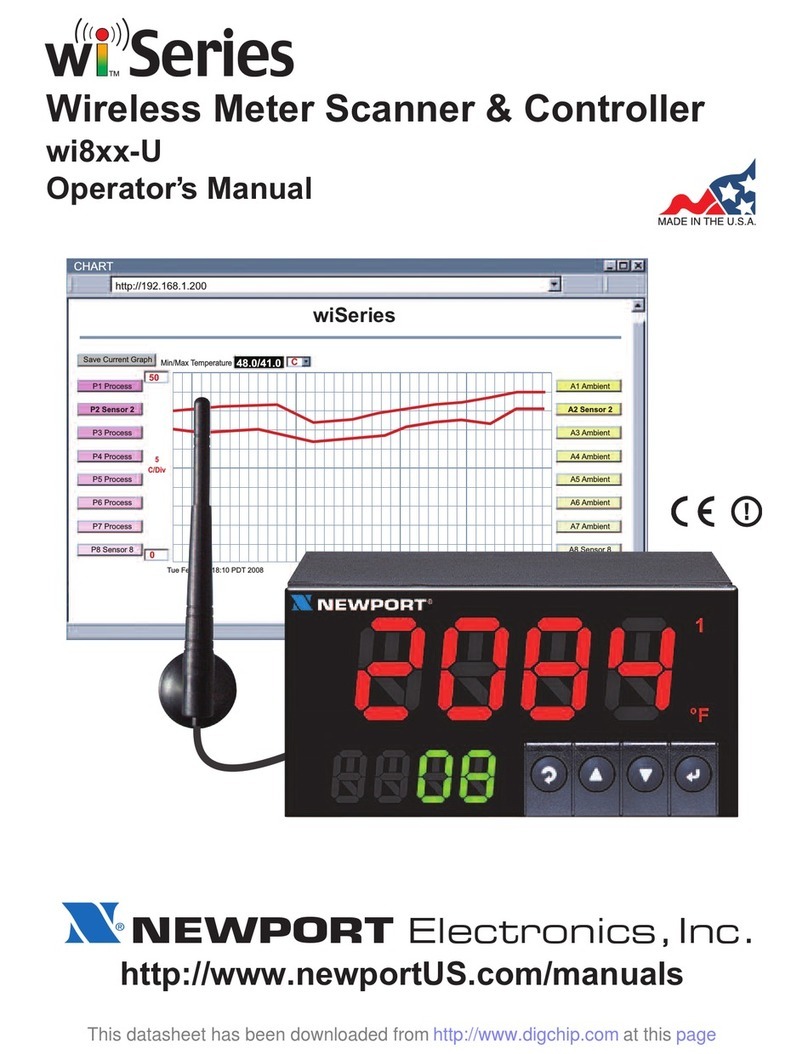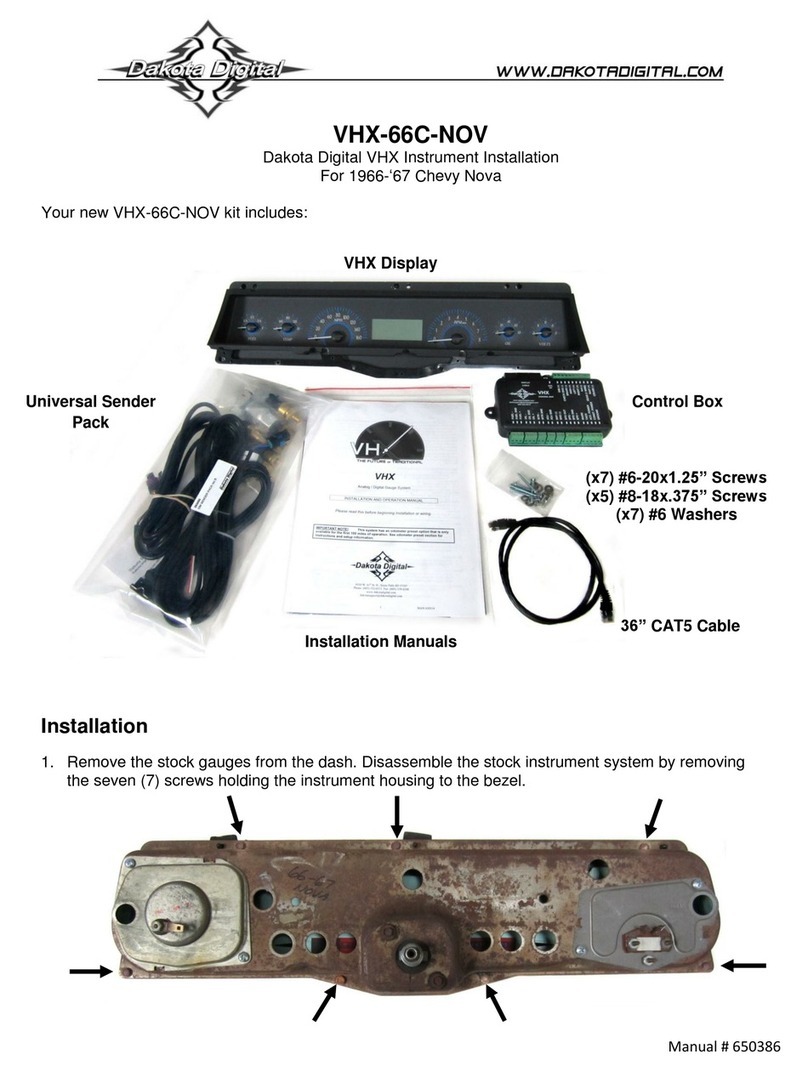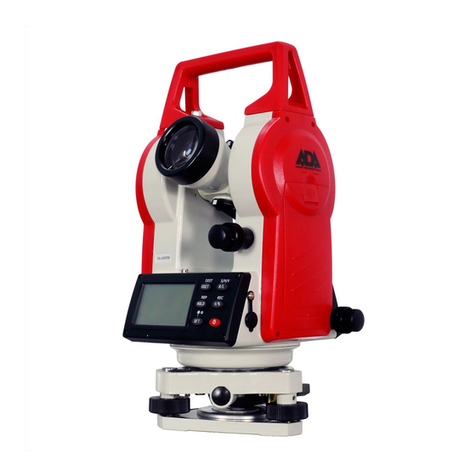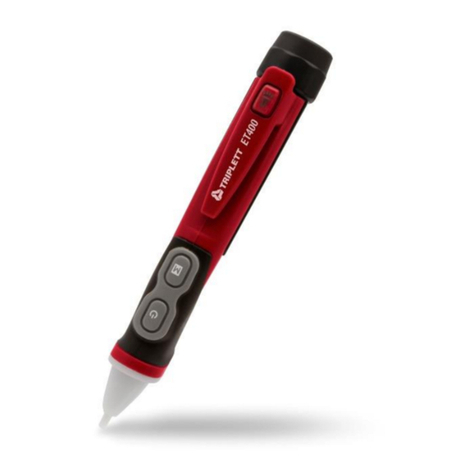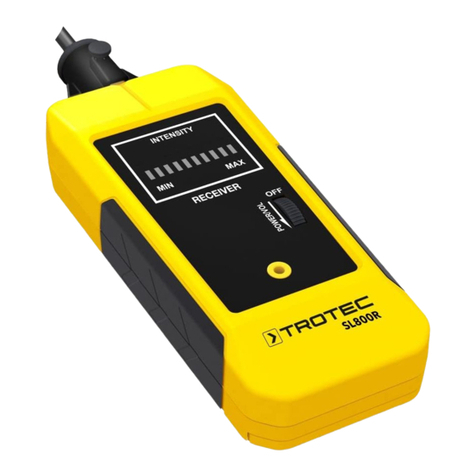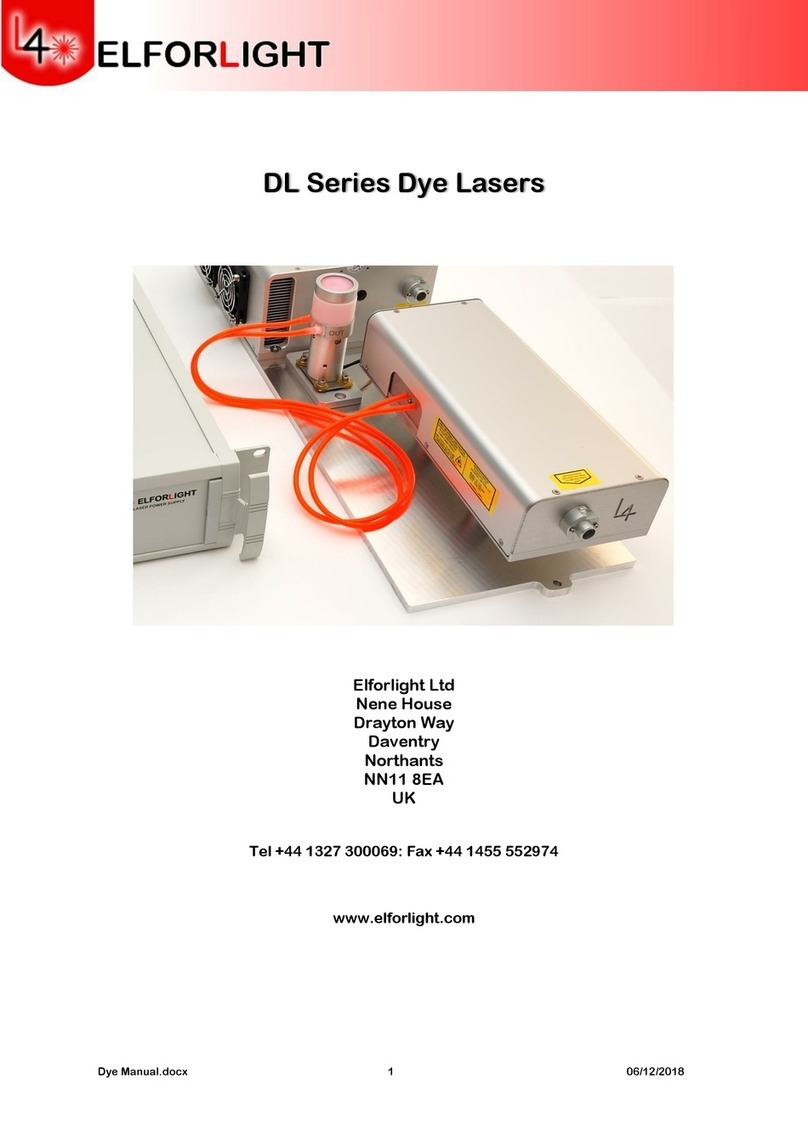MEDIAID 5340V User manual

Model 5340V
Pulse Oximeter for Veterinary Use
User’s Manual
MEDIAID INC.
17517 Fabrica Way • Cerritos California 90703 USA
Tel.: 714-367-2848 • Fax: 714-367-2852
Web: www.mediaidinc.com
Email: info@mediaidinc.com


Model 5340V
Pulse Oximeter for Veterinary Use
User’s Manual
MEDIAID INC.
17517 Fabrica Way • Cerritos California 90703 USA
Tel.: 714-367-2848 • Fax: 714-367-2852
Web: www.mediaidinc.com
Email: info@mediaidinc.com
© Mediaid Inc - All rights reserved

- ii -

Contents
-iii -
Table of Contents
Chapter 1: Principles of Operation
1.1 INTENDED USES .................................................................... 1
1.2 P R IN C IP LES OF P ULSE OX IME T RY .... .................... ............... . 1
1.3 PR INC IPL E O F M EAS U RI NG BOD Y T EM P ERA T UR E ..... .......... 1
1.4 M OD E OF DIS PL A YI NG OX YG E N S ATUR AT IO N ...................... 2
1.5 PRINCIPAL FEATURES ........................................................... 2
1.6 GENERAL CAUTIONS ............................................................. 3
1.7 ENVIRONMENTAL CAUTIONS ................................................. 3
Chapter 2: Keys, Indicators, & Symbols
2.1 KEYS & INDICATORS ............................................................. 5
2.2 AUDIBLE FEATURES ............................................................ 10
Oxygen Saturation Indicator ................................................... 10
Pulse Rate Indicator .............................................................. 10
Temperature Indicator............................................................ 10
Alarm Indicator ...................................................................... 10
2.3 SYMBOLS ............................................................................. 12
Chapter 3: Operating the Model 5340V
3.1 MEASURING PULSE OXIMETRY ........................................... 13
3.2 M EA SU R IN G BO D Y T E MP ER AT UR E ............ ....... ............... ... 1 4
3.3
F A U L T Y R E A D IN G & S E N S OR C O M P L IC A T IO N P R E V E N TIO N
.. 15
3.4
S E T T IN G T H E V O L U M E L E V E L O F T H E A U D IB L E IN D IC A T O R
. 15
3.5 READING & SETTING LEVELS .............................................. 16
3.6 S IL ENC IN G & R EAC T IVA T IN G A LA R MS ... ............................ 1 6
3.7 POWER ................................................................................. 17
3.8 DATA TRANSMISSION .......................................................... 18
3.9 TESTS .................................................................................. 19
Power-Up Test....................................................................... 20
Internal Confidence Tests ...................................................... 20
Diagnostic Tests .................................................................... 20
Global Test – Test 0 .............................................................. 21
Displa y a nd Indic a to r T es t – T es t 1 ....................................... 21

Contents
-iv -
Audible Annunciation Tes t – Test 2 ........................................ 21
Audible/Visual Alarm Test – Test 3......................................... 21
Control Key Test – Test 4 ...................................................... 21
Sensor Test – Test 5 ............................................................. 21
Serial Communication Test – Test 6 ....................................... 22
Reference Voltage Test – Test 7 ............................................ 22
Analog Output Test – Test 8 .................................................. 22
Internal Memory Test – Test 9................................................ 22
Set-Up Test – Test 10 ............................................................ 23
Chapter 4: Maintaining the Model 5340V
4.1 CLEANING INSTRUCTIONS .................................................. 25
4.2 TROUBLESHOOTING ............................................................ 25
Chapter 5: Equipment Specifications
5.1 OX Y GE N SA TU R ATI ON, PU LS E R A TE & T E MP E RA TU RE ..... 2 7
5.2 ALARMS ............................................................................... 27
5.3 ANALOG OUTPUTS............................................................... 27
5.4 SERIAL COMMUNICATION.................................................... 27
5.5 GENERAL ............................................................................. 28
5.6 SENSORS ............................................................................. 28
5.7 POWER SOURCE .................................................................. 28
5.8 ENVIRONMENTAL CONDITIONS .......................................... 28
5.9 EQUIPMENT CLASSIFICATIONS ........................................... 28
Chapter 6: Warranty Information
6.1 APPLICABILITY OF WARRANTY ........................................... 29
6.2 WARRANTY COVERAGE ....................................................... 29
6.3 M ED IA ID I NC . PR O BL EM C OR R ECT ION P LA N ...................... 2 9
6.4 OWNER’S REGISTRATION .................................................... 30
Chapter 7: Order Information
7.1 CONTACT INFORMATION ..................................................... 31
7.2 PRODUCT INFORMATION ..................................................... 31
WARRANTY REGISTRATION FORM......................................................33

Principles of Operation of the Model 5340V
- 1 -
Chapter 1:
Principles of Operation of
the Model 5340V
1.1 Intended Uses
The Model 5340V is intended to
continuously monitor an animal’s
arterial oxygen saturation and
heart rate. It also provides body
temperature information every two
minutes or on command.
1.2 Principles of Pulse Oximetry
The Mediaid Model 5340V Pulse Oximeter is designed to measure the
percentage oxygen saturation (%SpO2) of functional hemoglobin. Non-
invasive arterial oxygen saturation measurement is obtained by directing
red and infrared light through a pulsating vascular bed. The pulsating
arterioles in the path of the light beam cause a change in the amount of
light detected by a photodiode. The pulse oximeter measures within the
pulse waveform the ratio of transmitted red to infrared light, and thereby
determines the oxygen saturation of arterial blood. The non-pulsatile
signal is removed electronically for the purpose of calculation. Therefore,
skin, bone and other non-pulsating substances do not interfere with the
calculation of arterial oxygen saturation.
1.3 Principle of Measuring Body Temperature
The Mediaid Model 5340V’s temperature component is designed to
measure the animal’s core temperature with a rectal thermistor sensor.
The thermistor’s highly sensitive resistance decreases with increasing
temperature. The LED display indicates the animal’s body temperature.
WARNING
Before using the Model 5340V, the
user should become thoroughly
familiar with the information in this
manual and with all information
included with the sensors.

Principles of Operation of the Model 5340V
- 2 -
1.4 Mode of Displaying Oxygen Saturation
The Model 5340V displays pulse oximetry data as follows:
• A normal steady display signifies that the pulse oximeter has received
at least three intelligible pulses in the last 30 seconds. The display is
updated each time a normal pulse is received.
• A blinking display indicates that the Model 5340V has received no
usable pulses for at least 30 seconds. The displayed pulse oximetry
readings are at least 30 seconds old
• A blinking display with a 1-second warning tone every 10 seconds
indicates that the Model 5340V has received no usable pulses for at
least 60 seconds. The displayed pulse oximetry readings are at least
60 seconds old.
1.5 Principal Features
The Mediaid Model 5340V Pulse Oximeter is a portable, lightweight
instrument designed to non-invasively monitor arterial oxygen saturation,
heart rate and body temperature. The principal features of the Model
5340V are as follows:
• Displays with two bright Light Emitting Diodes (LEDS). Indicates
oxygen saturation, heart rate, and temperature.
• Provides a constant readout of oxygen saturation in %SpO2and heart
rate in beats per minute (BPM).
• Issues an audible tone that sounds for each pulse and varies in pitch
with oxygen saturation - falling in pitch with reduced saturation and
rising in pitch as saturation increases.
• Sounds a double tone to indicate each time the animal’s body
temperature is measured.
• Provides visual and audible alarms for oxygen saturation and pulse
rate monitoring.
• Allows for data transmission through the DATA PORT.
• Performs a functional test at power-on. Additional diagnostics tests
can be initiated manually.
• Alerts to a low-battery condition with a front-panel LED indicator.
• Powered by either standard electric power or an internal, recharge-
able Nickel-Cadmium (NiCad) battery.
• Compatible with all Mediaid veterinary sensors with RJ12 connectors.

Principles of Operation of the Model 5340V
- 3 -
1.6 General Cautions
• Federal law (USA) restricts this device to sale by or on the order of a
licensed veterinarian.
• Proper operation of the oximeter and sensors may be influenced by
patient movement, dysfunctional hemoglobin and dyes.
• Become thoroughly familiar with the information in the User’s Manual
and all accompanying documents before using the Model 5340V.
• Take appropriate measures (such as powering off the Model 5340V)
to Ensure animal safety in case of abnormal conditions during opera-
tion of the Model 5340V.
• Do not attempt to modify or repair the Model 5340V.
• Dispose of the Model 5340V according to governmental regulations.
1.7 Environmental Cautions
• Do not use in the presence of anesthetics or flammable agents.
• Do not allow any liquid to penetrate the instrument’s interior.
• Operate the Model 5340V in normal light conditions.
• Do not use near Magnetic Resonance Imaging (MRI) equipment.
• Keep away from other equipment, such as a defibrillator, which may
affect the accuracy of pulse oximetry readings.
• Move the Model 5340V away from other electromagnetic emitting
equipment if there are any interference problems. This device
complies with electromagnetic compatibility standards EN550011 and
EN60601-1-2.

Principe d’Utilisation
- 4 -

Keys, Indicators and Symbols
- 5 -
Chapter 2:
Keys, Indicators & Symbols
2.1 Keys and Indicators

Keys, Indicators and Symbols
- 6 -
A. Power On/Off Key
The unit is powered on with one short depression (less than
one second) of the Power On/Off Key. A 1-second display
and indicator test is performed automatically, and all Light
Emitting Diodes (LEDs) are illuminated. Carefully observe the
LED displays for proper operation of all segments. A nonfunctioning
segment will result in an incomplete numeral and possible erroneous
reading.
One long depression (3 seconds or longer) of the Power On/Off Key
initiates the Internal Confidence and Diagnostic Tests (see section
“Tests” in Chapter 3).
B. Oxygen Saturation Display
Whenever the pulse oximeter receives at least three (3) pulses during a
30-second period, the left LED displays the animal’s oxygen saturation
levels. The display is updated with every normal pulse. A blinking display
signals that %SpO2monitoring may be adversely affected, and indicates
the continuous presence (30 seconds or more) of significant patient
movement or light-source interference.
C. Pulse Rate Display
Whenever the pulse oximeter receives at least three (3) pulses during a
30-second period, the right, three-digit LED displays the patient’s heart
rate in beats-per-minute (BPM).
WARNING
A non-functioning LED segment may yield inaccurate readings.
WARNING
A blinking display indicates that the Model 5340V has received
NO usable pulses for at least 30 seconds. The displayed pulse
oximetry readings are at least 30 seconds old.
NOTE
If the unit is powered by battery and a pulse search is
unsuccessful for any reason, the Model 5340V automatically
powers off after one minute of unsuccessful pulse search.

Keys, Indicators and Symbols
- 7 -
D. Visual Pulse Indicator
As soon as a pulse is found, the heartbeat is indicated by a green LED.
The VISUAL PULSE RATE INDICATOR simultaneously flashes with the
animal’s pulse. It typically begins to flash a few seconds before
numerical values for oxygen saturation and pulse rate are shown.
E. Low Battery Indicator
The LOW BATTERY INDICATOR illuminates when the
battery is near depletion. In order to continue battery-only
operation, the user needs to suspend measurements and
recharge the battery (using the method described in section “POWER” in
Chapter 3).
F. Sensor Cable Connection
All Mediaid pulse oximetry sensors with RJ12
connectors are compatible with the Model 5340V.
To connect a sensor to the oximeter, align the plug
with the jack on the oximeter and insert it gently until an audible “click” is
heard — indicating that the plug tab is latched in place. To remove,
squeeze the locking tab on the plug and slide the plug out of the jack.
G. Power Connection
For electric power, plug the adaptor into the pulse oximeter’s
POWER CONNECTION, and then plug the other end of the
adaptor into a standard electrical outlet. (All Mediaid pulse
oximeters are designed to be used with the adaptor provided by
Mediaid Inc. at the time of purchase.)
NOTE
The pulse oximeter powers off shortly after a low-battery
indication. The Model 5340V displays B A T L O if power-on is
attempted during a low battery condition.
NOTE
The sensor might move slightly in the connector.

Keys, Indicators and Symbols
- 8 -
H. Power Indicator
The green LED located on the bottom of the oximeter adjacent to the
POWER CONNECTION illuminates when the Model 5340V is connected
to electric power.
I. Data Port
The DATA PORT is used for serial and analog output. The
DATA PORT should be used only for connection to
equipment that complies with CSA/IEC/UL601-1.
•To eliminate risk of shock, take care not to touch the DATA PORT
8-pin Connector and the animal simultaneously.
J. Alarm Off Key
One short depression of the Alarm Off Key silences the
alarm for a period of 60 seconds. One long depression of
the ALARM OFF KEY completely disables the audible
alarm. The LED displays show ALOFF, the ALARM OFF
INDICATOR begins to flash, and the pulse oximeter reverts to normal
monitoring. Silenced alarms can be reactivated by one short depression
of the ALARM OFF KEY. Disabled audible alarms are reactivated by one
long depression of the ALARM OFF KEY. The LED displays show ALOn.
K. Alarm Off Indicator
The ALARM OFF INDICATOR illuminates and remains on constantly
when alarms are silenced, and flashes when audible alarms are
disabled.
L. Oxygen Saturation Alarm Key
One short depression of the OXYGEN SATURATION
ALARM KEY toggles the display between the high and low
NOTE
Visual alarm indicators cannot be deactivated.

Keys, Indicators and Symbols
- 9 -
alarm settings, as shown by the HI/LO ALARM INDICATORS. These
alarm settings can be adjusted with the INCREMENT or
DECREMENT KEY. The alarm settings will be retained in memory
until changed by the user. Exception: When the low-saturation alarm is
set below 80%, it returns to 80% at the next power-up. The saturation
alarm factory settings are: high 100% and low 85%. The high-saturation
alarm can be disabled by setting it at 100%. The Model 5340V reverts to
normal monitoring after a 5-second period of key inactivity.
M. Pulse Rate Alarm Key
One short depression of the PULSE RATE ALARM KEY
toggles the display between the high and low alarm settings
as shown by the HI/LO ALARM INDICATORS. These alarm
settings can be adjusted with the INCREMENT or DECREMENT
KEY. The alarm settings are retained in memory until changed by the
user. The pulse-rate alarm factory settings are: high 140 BPM
and low 50 BPM . The Model 5340V reverts to normal animal
monitoring after a 5-second period of key inactivity. Temperature
measurements can be initiated manually at any time with one long
depression of the PULSE RATE ALARM KEY.
N. Increment & Decrement Keys
The Model 5340V’s pulse-tone volumes can be
adjusted using the INCREMENT or
DECREMENT Key. There are three levels of
audible pulse-tones, and “off.” The pulse tone volume can be increased
with the INCREMENT KEY and decreased or silenced with the
DECREMENT KEY . Alarm settings are also adjusted with these keys.
O. Hi/Lo Alarm Indicators
The HI/LO ALARM INDICATORS are located beneath the OXYGEN
SATURATION ALARM and PULSE RATE ALARM KEYS. These
indicators flash when the animal’s oxygen saturation or pulse rate
reaches the preset high or low alarm limits. In order to set the high alarm

Keys, Indicators and Symbols
- 10 -
limits, the HI ALARM INDICATOR must be illuminated. To set the low
alarm limits, the LO ALARM INDICATOR must be illuminated.
P. Temperature Display
When a thermistor sensor is being used, the two LED displays indicate
the animal’s body temperature in degrees Celsius or Fahrenheit. Once
monitoring begins, the temperature is displayed every two minutes and is
announced with a double-beep audible tone. The temperature can also
be measured at any time by one long depression of the PULSE RATE
ALARM KEY. One long depression of the OXYGEN SATURATION
ALARM KEY toggles the temperature setting (Cº or Fº).
2.2 Audible Features
Oxygen Saturation Indicator
A varying pitch of the audible tone signals a change in the oxygen
saturation level - a falling pitch indicates a decreasing oxygen saturation
level, whereas a raising pitch indicates an increasing oxygen saturation
level.
Audible Pulse Rate Indicator
A beeping audible tone signals the heartbeat. There are three
volume levels of pulse-tones, and “off.” The pulse-tone volume can be
increased with the INCREMENT KEY and decreased or silenced with
the DECREMENT KEY .
Temperature Indicator
A double-beep audible tone sounds each time the animal’s temperature
is displayed.
Alarm Indicators
Alarm conditions are generated only after an initial pulse has been
detected. Alarm tones are automatically silenced after the alarm
condition goes away.
•The HIGH PRIORITY alarm tones sound continuously at the highest
frequency and highest volume. HIGH PRIORITY alarms are caused
by conditions such as low and high oxygen saturation and pulse rate,
no pulse, excessive ambient light, and other error conditions.

Keys, Indicators and Symbols
- 11 -
•The MEDIUM PRIORITY alarm tones sound for 0.75 seconds every
5 seconds at the highest frequency and highest volume. MEDIUM
PRIORITY alarms are caused by measuring problems such as a
disconnected sensor, too thin or thick tissue, or a faulty sensor.
•The LOW PRIORITY alarm tones sound for one second every 10
seconds at the lowest frequency and highest volume. LOW
PRIORITY alarms are caused by excessive animal movement or an
irregular heartbeat.

Keys, Indicators and Symbols
- 12 -
2.3 Symbols
Symbol
Definition
%SpO2
Oxygen Saturation Percentage
Heart Beats Per Minute (BPM)
Power On/Off KEY
Alarm Off KEY
Oxygen Saturation Alarm KEY
Pulse Rate Alarm KEY
Increment KEY
Decrement KEY
Data Port
Sensor Cable Connector
Power Connection
Low Battery Indicator
Attention: Consult Accompanying Documents
Non-anesthetic Proof
Type BF Applied Part
–
Hi/Lo Alarm Indicator

Operating the Model 5340V
- 13 -
Chapter 3:
Operating the Model 5340V
3.1 Measuring Pulse Oximetry
To measure and display pulse
oximetry, follow these steps:
1) Choose an appropriate sensor.
2) Place the sensor according to the
instructions with the sensor.
3) Connect the sensor to the
SENSOR CABLE CONNECTION
of the Model 5340V.
NOTE: The sensor might move
slightly within the connector.
4) Follow all guidelines in section
“Faulty Reading & Sensor
Complication Prevention” to
prevent faulty readings and
sensor complications.
5) Power on the unit with one short
depression of the POWER
ON/OFF KEY. The Model 5340V
tests the displays and the
indicators with the initiated
POWER-UP TEST.
NOTE: One long depression of
the POWER ON/OFF KEY
initiates the Internal Confidence
Tests (see section “Internal
Confidence Tests” in Chapter 3).
6) Check that all LED segments light
up during the POWER-UP TEST.
7) Be sure that the VISUAL PULSE
RATE INDICATOR is flashing
during the monitoring process.
8) Read the animal’s oxygen saturation and heart rate off of the
OXYGEN SATURATION and PULSE RATE DISPLAY.
9) Listen to the PULSE RATE INDICATOR.
WARNING
A non-functioning LED
segment may yield inaccurate
pulse oximetry readings.
WARNING
Do NOT silence the audible
alarms if the safety of the
animal could be compromised.
WARNING
To ensure personal safety and
proper operation of the Model
5340V, adhere to ALL
directions, information, and
cautions stipulated within this
document.
WARNING
Animal movement, light-source
interference, or any other
disturbances that occur for
more than 30 seconds are
indicated by a blinking display.
The displayed pulse
oximeter readings are at least
30 seconds old.

Operating the Model 5340V
- 14 -
NOTE: There are three volume levels of audible pulse tones, and
“off”. The tone varies in pitch with oxygen saturation - falling in pitch
with reduced saturation and rising in pitch as saturation increases.
See section “Setting the Volume Level of the Audible Indicator” in
Chapter 3.
10) Set the pulse oximetry and heart rate alarm levels according to
section “Reading and Setting Alarm Levels” in Chapter 3.
11) Silence and reactivate alarms according to section “Silencing and
Reactivating Alarms” in Chapter 3.
3.2 Measuring Body Temperature
To measure and display body temperature, follow these steps:
1) Choose an appropriate sensor.
2) Place the sensor on the animal according to the instructions included
with each sensor.
3) Connect the sensor to the
SENSOR CABLE CONNECTION
of the Model 5340V.
NOTE: The sensor might move
slightly within the connector.
4) Follow all guidelines to prevent
faulty readings and sensor or
oximeter complications.
5) Power on the unit with one short
depression of the POWER
ON/OFF KEY. The Model 5340V tests the displays and indicators with
the initiated POWER-UP TEST.
6) Check that all LED segments light up during the POWER-UP TEST.
(See section “Power-Up Test” in Chapter 3).
7) Initiate the temperature measurement with one long depression of the
PULSE RATE ALARM KEY. The Model 5340V displays the
temperature on TEMPERATURE DISPLAY. The Model 5340V
automatically measures and displays body temperature every two
minutes. Measurements can be initiated manually at any time with
one long depression of the PULSE RATE ALARM KEY. A short
double-beep alerts the user to the display of the temperature.
8) Change the temperature display from Celsius to Fahrenheit or vice
versa with one long depression of the OXYGEN SATURATION
ALARM KEY.
WARNING
During insertion of the Rectal
sensor, rectal perforation can
occur if excessive force is
used. If resistance is
encountered, withdraw the
sensor, slightly change the
direction of
the sensor, and reinsert.
Table of contents
Popular Measuring Instrument manuals by other brands
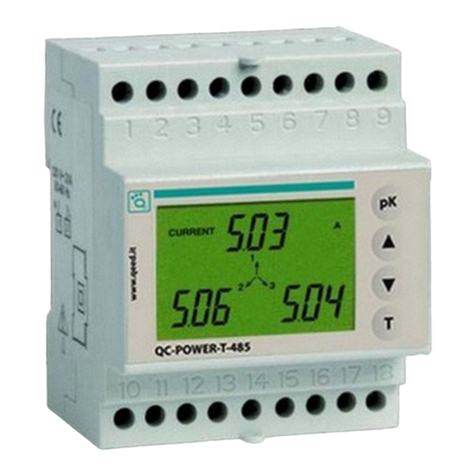
QEED
QEED QC-POWER-T-485 user manual

Shineway Technologies
Shineway Technologies OCC-50 user manual
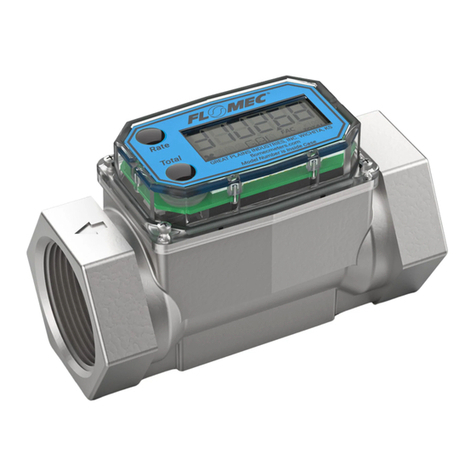
Flomec
Flomec G2 owner's manual

Leuze
Leuze AMS 300i Technical description
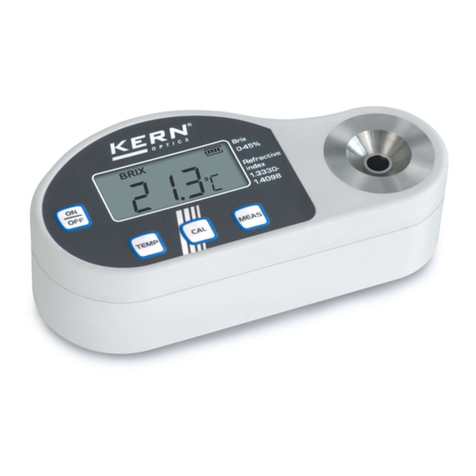
KERN
KERN ORD 45BM operating manual

Shanghai Sunny Hengping Scientific Instrument Co., Ltd
Shanghai Sunny Hengping Scientific Instrument Co., Ltd UV2000 instruction manual
